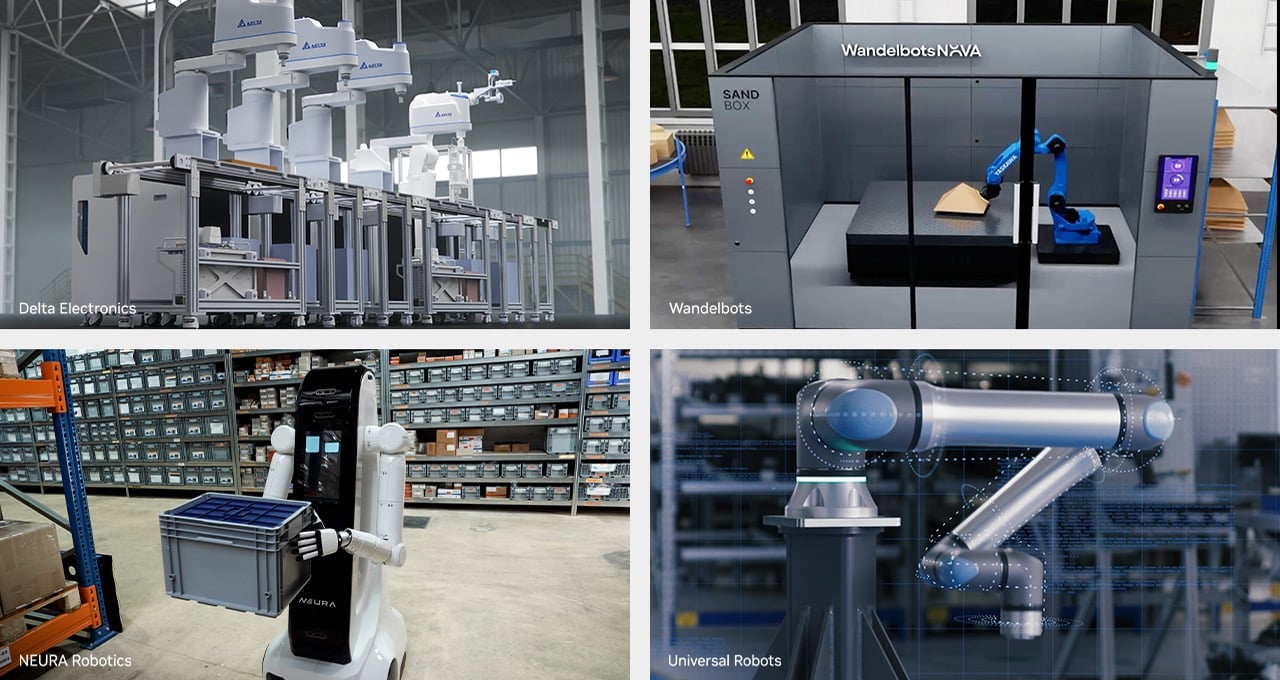At the heart of the Automatica 2025 fair, one of Europe’s most important events in automation and intelligent robotics, NVIDIA showcased a powerful demonstration of how artificial intelligence and simulation are revolutionizing the industry. With a solid network of partners and a clear vision towards autonomous automation, the American tech company has marked a turning point in the evolution of advanced robotics.
Industrial Robotics with Artificial Brain
NVIDIA introduced its Isaac GR00T N1.5 platform, a foundational model designed to equip humanoid robots with unprecedented reasoning, skills, and adaptability. This system, capable of following complex instructions and performing tasks such as object manipulation and internal logistics, serves as the foundation on which many of its partners are building new generations of robots.
To enhance its capabilities, the company also introduced Isaac GR00T-Dreams, a workflow for generating synthetic data from human demonstrations, allowing robots to learn from just a few real examples and better generalize in different environments.
Simulation: From the Lab to the Real World
One of the major focuses of Automatica 2025 has been the ability to transition simulations to the physical world, a process that NVIDIA masters thanks to its ecosystem based on Isaac Sim 5.0, Isaac Lab 2.2, and the 3D collaboration platform NVIDIA Omniverse. These tools enable the simulation, training, and validation of robot behavior in high-fidelity virtual environments before real-world deployment.
Companies such as Doosan Robotics, Wandelbots, and Cyngn are already utilizing these platforms to accelerate development time and reduce errors in the design of autonomous systems. The concept of “sim to real” has shifted from a promise to a tangible strategy.
Partners Building the Future
NVIDIA’s participation in Automatica was supported by a strong alliance with leaders in the robotics sector:
- NEURA Robotics showcased the third generation of its humanoid 4NE1, powered by the GR00T model and fully trained in simulation.
- Franka Robotics demonstrated its dual-arm robot FR3, capable of interpreting visual inputs and acting with contextual intelligence without the need for specific programming.
- Hexagon unveiled AEON, a humanoid designed for critical industrial tasks, featuring advanced locomotion and multimodal sensory fusion.
- Universal Robots revealed its fastest cobot to date, UR15, powered by CUDA technologies and Isaac libraries.
- Vention, focused on industrial automation, integrated Franka’s robots into its academic and research ecosystem with physical artificial intelligence capabilities.
A European Ecosystem for Industrial AI
During the event, the progress of the first European industrial AI factory, equipped with 10,000 NVIDIA GPUs and located in Germany, was also highlighted. This infrastructure will serve as the backbone for manufacturers across the continent, offering a sovereign and secure platform for model training, AI-assisted design, and complete factory digital twins.
Additionally, NVIDIA demonstrated how its technology is crucial in pan-European projects backed by public and private investments exceeding $200 billion.
Research Leading the Way
NVIDIA’s presence extended beyond Automatica. At the Robotics: Science and Systems (RSS) 2025 conference held in Los Angeles, company researchers presented advancements such as:
- ASAP, a technique for humanoid robots to learn agile movements based on real data.
- Open-world planning with language and vision models that allow robots to interpret human instructions in unstructured environments.
- GPU-parallelized motion planning, a solution for real-time robotic task planning leveraging parallel computing.
The Leap Toward True Autonomy
“Robotics is no longer just engineering; it’s a fusion of physical simulation, artificial intelligence, and ongoing learning,” explained Fabio Ramos, senior researcher at NVIDIA. “The advancements we are showcasing at Automatica and RSS 2025 bring the industry closer to a scenario of adaptable, real-time autonomy.”
With this participation, NVIDIA solidifies its leadership as a catalyst for change in industrial robotics, fostering an ecosystem where AI not only optimizes processes but creates new forms of human-machine interaction, with applications ranging from advanced manufacturing to personal assistance and infrastructure inspection.
Source: blogs.nvidia.com

